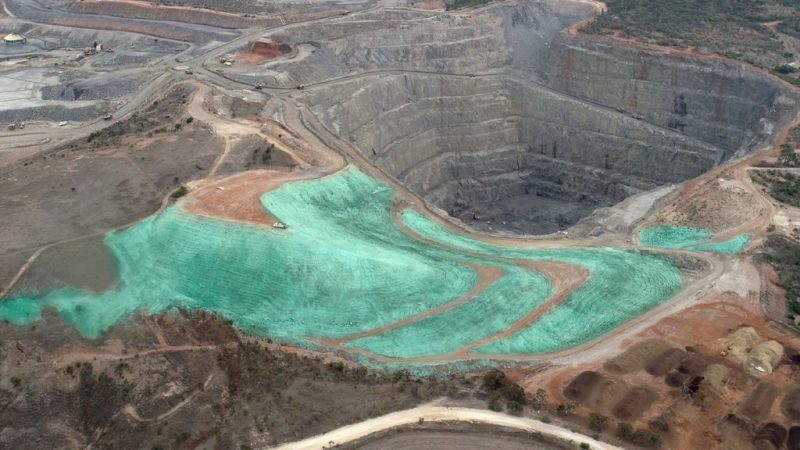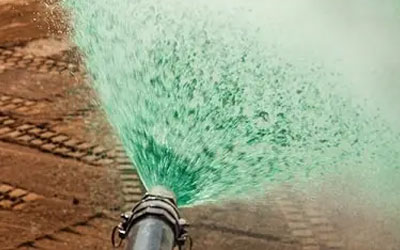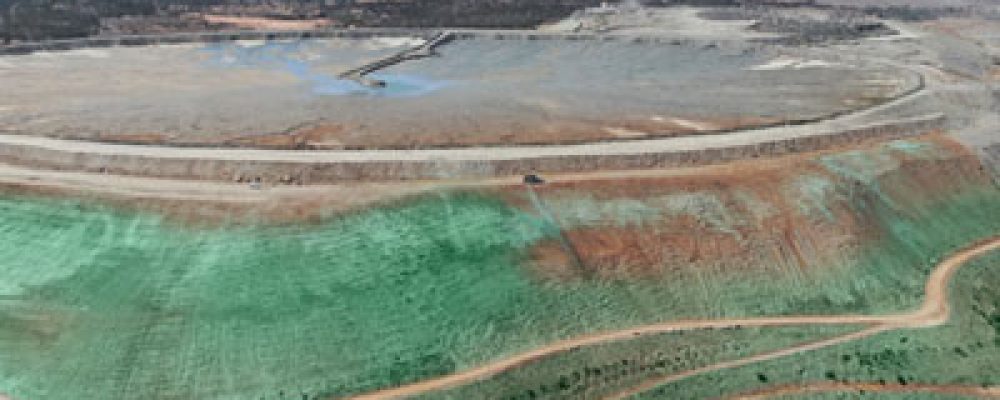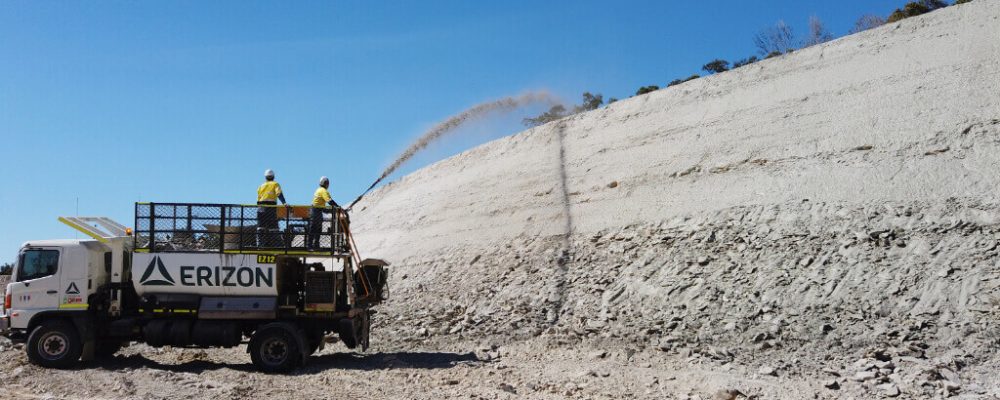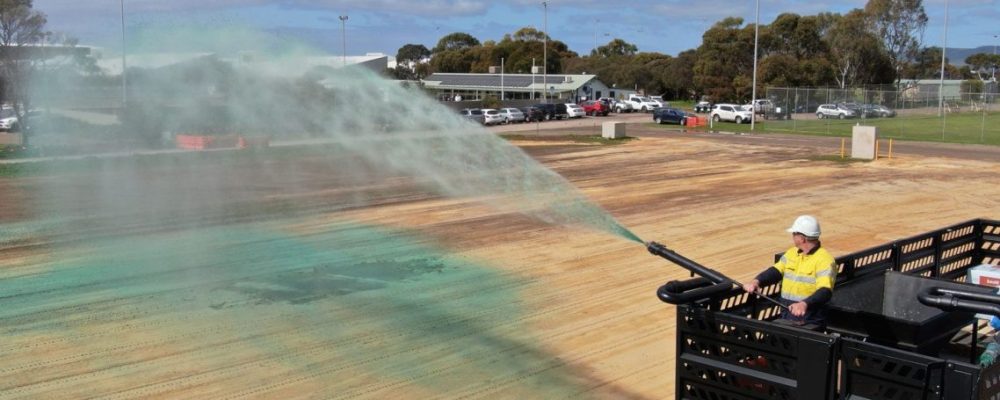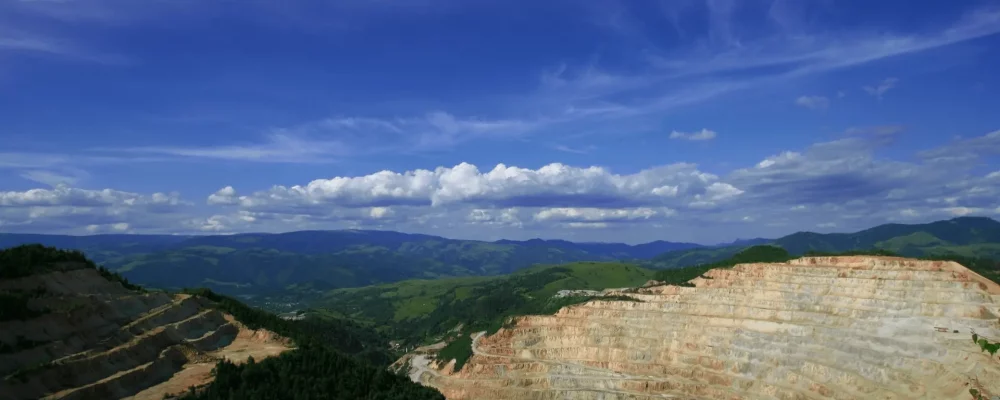Mining, while fundamental to modern society, presents a significant environmental challenge, particularly in the area of waste management. In this article we explore the concept of mine spoil, a by-product of mining operations that, if managed properly, can assist in the rehabilitation of mining sites.
We explore the potential of mine spoil for soil rehabilitation, examining emerging techniques and strategies for waste management in mining. The objective is to provide valuable insight into innovative approaches to transform mining waste into a valuable resource for environmental preservation and restoration.
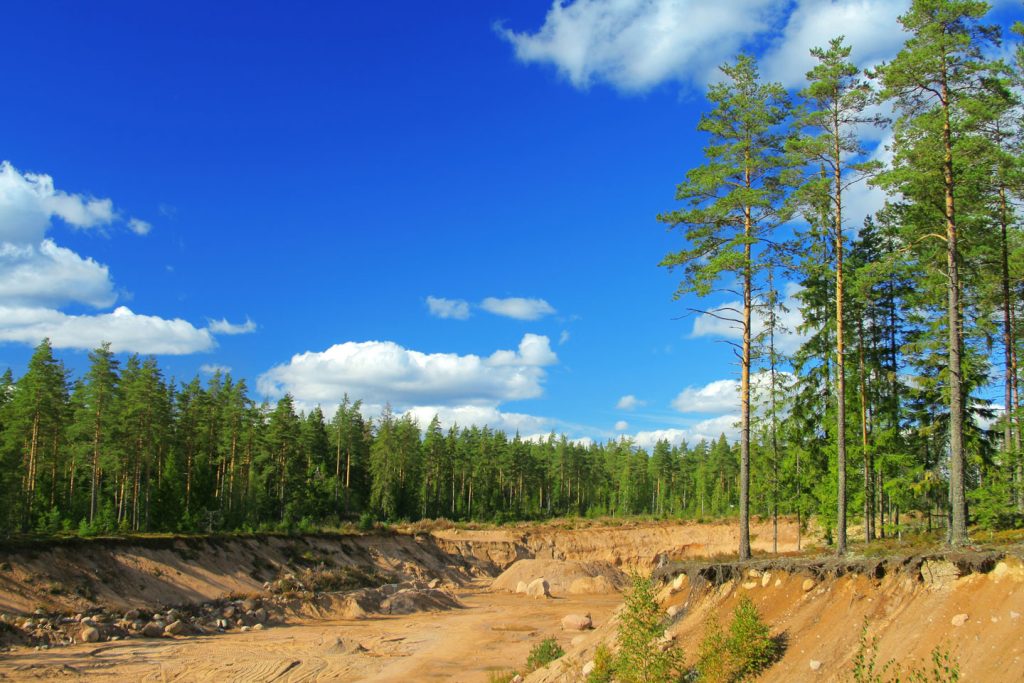
Types of Mining Spoil
Mining operations generate different types of mine spoil, each with its unique composition and potential environmental impact impact. But with a focus on dust management, these can be transformed into opportunities for positive environmental and industrial progress.
Overdurden spoil – made up mostly of soil and rock that overlays the mineral deposit, is a potential source of dust. However, its organic matter and nutrient composition make it an invaluable resource for land reclamation projects, transforming a potential risks into a beneficial solution.
Tailings – a by-product of mineral processing operations, consist of finely ground rock and mineral waste. These particles, if airborne, could contribute to dust pollution. However, though careful management and storage in tailings dams, the risk of heavy metal contamination and dust can be substantially reduced.
Waste rock – another potential source of dust, consists if unprofitable rock or mineral content that is removed to access valuable mineral deposits. Despite potential risks, with rigorous dust management protocols, we can prevent environmental degradation and ensure safer mining operations.
Slag – a by-product of metallurgical operations like smelting of metal ores, can also contribute to dust issues. Yet, recent research shows in utilizing slag in various industrial applications, turning that once considered waste into a valuable resource
The Mining Process
The mining process, often referred to as extraction, is a complex sequence of operations aimed at retrieving valuable minerals or other geological materials from the earth.
The process commences with prospecting, a stage where potential mining sites are identified and analysed for their mineral content using geological, geophysical and geochemical methods.
Following this is the exploration phase, where more detailed information about the mineral deposit’s size, shape and quality is gathered through methods such as drilling and sampling.
Once the viability of a site is confirmed, it advances into the development stage. This involves the construction of access routes, either tunnels or shafts, depending on whether the mining operation is underground or open cut.
The extraction phase follows, where the valuable minerals are physically retrieved. In open-cut mining, layers of soil and rock, known as overburden, are removed to expose the mineral deposit. In underground mining, tunnels or shafts are used to reach the deposit. The extraction phase is where most mine spoil is generated, including overburden, waste rock, tailings and slag.
Post-extraction, the mined material undergoes a processing phase to separate and refine the valuable minerals. The processing techniques vary depending on the mineral type and may include crushing, grinding, washing and sorting.
The final stage of the mining process involves returning the land to its original state or repurposing it for other uses, a process known as reclamation or rehabilitation. Mine spoil can play a significant role in these efforts, offering potential opportunities for waste management and environmental preservation.
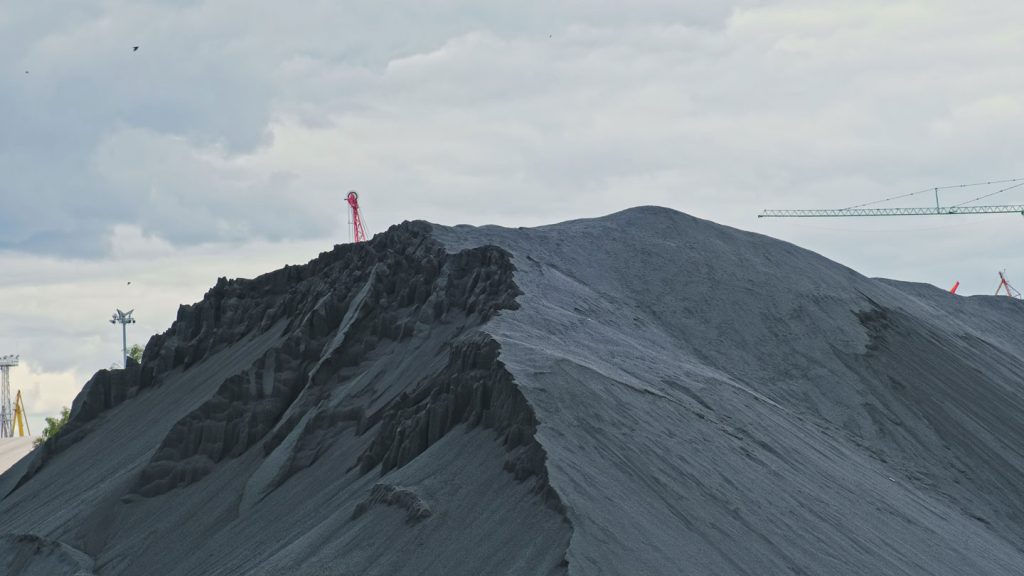
Environmental Impact of Mining Spoil
Mining spoil, due to its often hazardous composition, can have severe effects on the environment if not managed properly. The impact of these mining by-products can be categorised broadly into soil, water and air pollution.
Soil Enhancement: Mine spoil, including overburden and waste rock, can have an impact on soil quality. While some spoil materials may contain heavy metals like arsenic, lead, and mercury, careful management and remediation efforts can help improve soil conditions
Recent research has shown that soil microbial communities, crucial for soil health, can thrive with proper management practices.
Water Stewardship: Properly managed tailings and slags, often stirred in engineered facilities like tailings ponds, can help prevent water pollution. When handled responsibly, these materials are less likely to leach harmful substances into groundwater or surface water systems. By implementing rigorous containment and treatment measures, we can safeguard aquatic ecosystems and ensure the availability of clean water supplies.
Air Quality Management: Dust generated from mining spoil heaps, including overburden and waste rock, can be effectively managed through dust control measures. These actions not only reduce air pollution but also protect the health and well-being of communities near mining operations. Additionally, advancements in mining technology allow for better control over the release of harmful gases, contributing to improved air quality
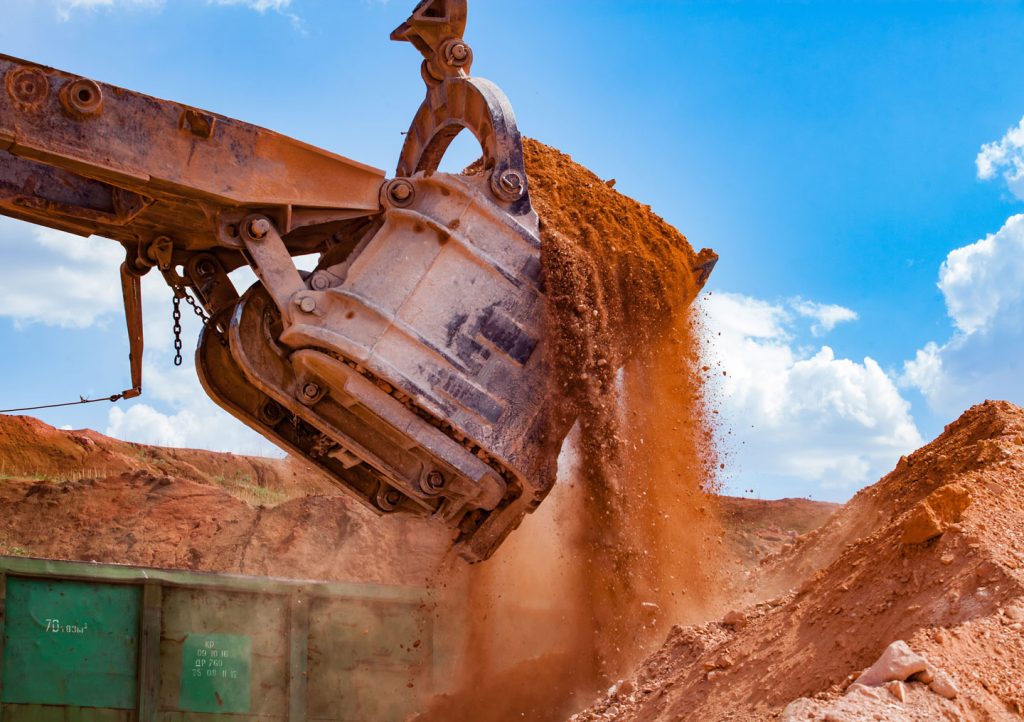
Why Is There a Need for Mining Spoil Amelioration?
The imperative for mine spoil amelioration is primarily driven by the opportunity to transform potential environmental and health challenges posed by improperly managed mining by-products into a catalyst for positive change. As outlined in the previous sections, the usual toxins found in these spoils have the potential to cause soil, water, and air pollution.
Addressing these issues not only safeguard our crucial resources but also enhances the health of communities situated near mining sites. Moreover, treating mine spoil can turn stark and barren landscape into lush, verdant expanses, benefitting both wildlife habitat and visual appeal of the area.
Beyond the significant environmental and health improvements, mine spoil amelioration carries promising economic prospects. Upgrading spoil can be repurposed in a variety of ways, such as construction materials or for land reclamation, fostering the emergence of new industries and jobs.
Therefore, the process of spoil amelioration plays a pivotal role in sustainable mining practices, harmoniously marrying the economic profitability with environmental conservation and social well-being.
The Importance of Community Engagement in Mine Site Rehabilitation
Community engagement holds paramount importance when it comes to mine site rehabilitation. Often, local communities bear the brunt of the environmental impacts of mining activities. Therefore, involving them in the process of rehabilitation allows for the resolution of their concerns and the consideration of their needs and knowledge in the rehabilitation strategy. This inclusion allows for a more sustainable and socially acceptable solution.
Furthermore, community participation can lead to stronger commitment and ownership for the long-term maintenance of rehabilitated areas.
Active community involvement can also increase the chances of a successful rehabilitation, as locals are likely to possess a deep understanding of the local environment and its conditions. This interaction assures the community’s social licence to operate, fostering trust between the mining operation and the local population.
Lastly, community participation in mine site rehabilitation can also stimulate local economies by creating jobs and learning opportunities. This paves the way for sustainable community development, post-mining closure.
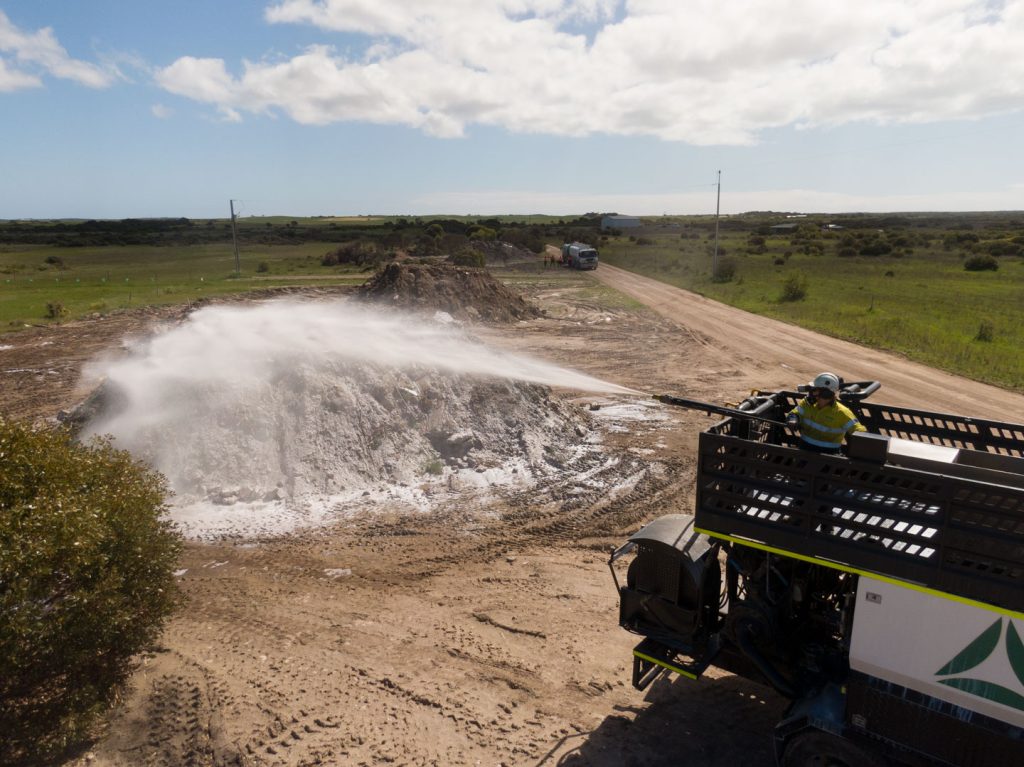
Legal and Regulatory Frameworks for Mine Site Rehabilitation
Regulation of mine site rehabilitation in Australia is primarily enforced through state and territory legislation, with each jurisdiction having its own specific laws and guidelines. Key legislation includes the Western Australia Mining Act (1978), the South Australia Mining Act (1971), and the Queensland Mineral Resources Act (1989), among others.
These legal frameworks require mining companies to have a rehabilitation plan in place before mining begins and to post a financial assurance or bond to guarantee rehabilitation completion. The regulatory frameworks also encourage progressive rehabilitation throughout the lifespan of the mine, rather than leaving all rehabilitation until the end of the mining operation.
The Commonwealth Environment Protection and Biodiversity Conservation Act (1999) also plays a role, particularly for projects that impact matters of national environmental significance. It requires a rigorous environmental assessment and approval process for such projects. In 2019, a national standard for mine rehabilitation was proposed by the Federal Government, aiming to ensure consistent and robust practices across all jurisdictions.
Challenges in Mine Site Rehabilitation
The path to successful mine site rehabilitation is fraught with various challenges. These obstacles can be categorised into several primary factors, each presenting its unique set of difficulties.
Here are some of the common challenges faced during mine site rehabilitation:
Nutrient Limitation
One of the most significant challenges in rehabilitating open-cut mines is the deficiency of essential nutrients in the mine soil. The extraction process often strips the soil of key nutrients necessary for plant growth, such as nitrogen, phosphorus and potassium. Moreover, the high levels of heavy metals present in the mine spoil can inhibit the uptake of these nutrients by plants, further making revegetation a complex and challenging task.
Saline and Sodic Environment
Another factor that complicates mine rehabilitation is the saline and sodic nature of spoil from many mines. High salinity can limit plant growth by affecting osmotic potential, thereby restricting water uptake by plants. Sodic soils, on the other hand, characterised by a high sodium content, can lead to soil structure degradation and reduced permeability and can further hinder plant establishment.
These conditions require specific management strategies and the use of salt-tolerant plant species for successful rehabilitation.
Poor Water-Holding Capacity
The poor water-holding capacity of mine spoil constitutes another obstacle in the rehabilitation process. Mine soils often have a coarse texture and lack organic matter, both of which contribute to low water retention capacity.
This makes the soil less conducive for plant growth as it cannot provide sufficient moisture to support plant establishment and survival, especially under drought conditions. Therefore, improving the water-holding capacity of mine soils through the addition of organic matter or other soil amendments is often necessary for successful rehabilitation.
Mining Spoil Amelioration Techniques
Scientific advancements have provided various methods to ameliorate mine spoil.
These techniques aim to restore the ecological balance of mining sites and mitigate environmental impacts:
Topsoiling
Topsoiling involves preserving the top layer of soil before mining begins. This layer is rich in organic matter and microorganisms crucial for soil health. After mining, this soil is returned to the site, fostering a conducive environment for vegetation to thrive.
Liming
Liming is a method used to neutralise acidic soils, a common issue with mine spoil. Lime increases the soil’s pH levels, thereby enhancing its suitability for plant growth. An example of this technique’s effectiveness can be seen in the Jales gold mine spoil in Portugal.
Fertilisation
Fertilisation involves adding nutrients to the soil to promote plant growth. Nutrients such as nitrogen, phosphorus and potassium are often added to mine spoil to improve its fertility.
Mulching
Mulching is the process of covering the soil surface with organic materials like straw or wood chips. This practice aids in moisture conservation and contributes organic matter to the soil, improving soil fertility and structure over time.
Hydroseeding
Hydroseeding involves spraying a slurry containing seeds, fertilisers and mulch onto mine spoil. This method allows for quick and uniform germination of plants, making it particularly beneficial in hard-to-reach areas.
Ripping
Ripping is a mechanical technique that involves breaking up compacted mine spoil to create a loose, aerated soil structure. This process improves water infiltration and root penetration, thereby promoting plant growth.
Revegetation
Revegetation involves planting native or tolerant plant species to stabilise the soil and initiate ecosystem development. Successful mine site rehabilitation requires effective revegetation strategies, as seen in the Sunshine Energy Park Revegetation case study.
How Can Mining Spoil Contribute to Rehabilitation Efforts?
Despite its challenges, mine spoil can significantly contribute to successful mine site rehabilitation outcomes. It can be used as a substrate for the growth of plant species, especially those that are tolerant of the challenging conditions presented by mine spoil. Some plants, known as hyper-accumulators, are known for their ability to thrive in heavy metal-rich soils and can contribute to a process known as phytoremediation. This involves the use of plants to stabilise, remove or degrade harmful contaminants in soil.
Mine spoil can also be used to provide a home for certain types of beneficial microbes. These microorganisms can assist in the process of bioremediation, which involves the use of biological agents, such as bacteria or fungi, to remove or neutralise pollutants. Furthermore, mine spoil can be managed and ameliorated to transform it into a resource for rehabilitation.
For instance, composting, biosolids application and the addition of other organic materials can enhance the nutrient content and water-holding capacity of mine spoil, thereby improving its suitability for plant growth and establishment.
In addition, various physical treatments of mine spoil such as contouring and terracing can help stabilise the landscape and reduce erosion, further aiding the rehabilitation process.
Using Microbial Inoculants to Fast Track Spoil-to-Soil Transformation
Microbial inoculants have emerged as a promising technique to accelerate soil formation during the rehabilitation of mine spoil. They provide an integrated approach focusing not only on above ground ecosystems but also on the crucial below ground microbial communities.
The Role of Microbial Inoculants in Rehabilitation
In conventional rehabilitation techniques, the focus is often on stabilising waste piles and re-establishing above ground ecosystems. However, for long-term sustainability, it’s essential to restore the fertility of mine spoil dumps. This can be achieved through an integrated approach involving the arrangement of spoil with organic waste and inoculation with microbial biofertilisers.
Microbial inoculants, which include bacteria and fungi, help improve soil fertility by enhancing nutrient availability and promoting biogeochemical processes essential for plant growth. As a result, they increase the survivability, growth and biomass of plants.
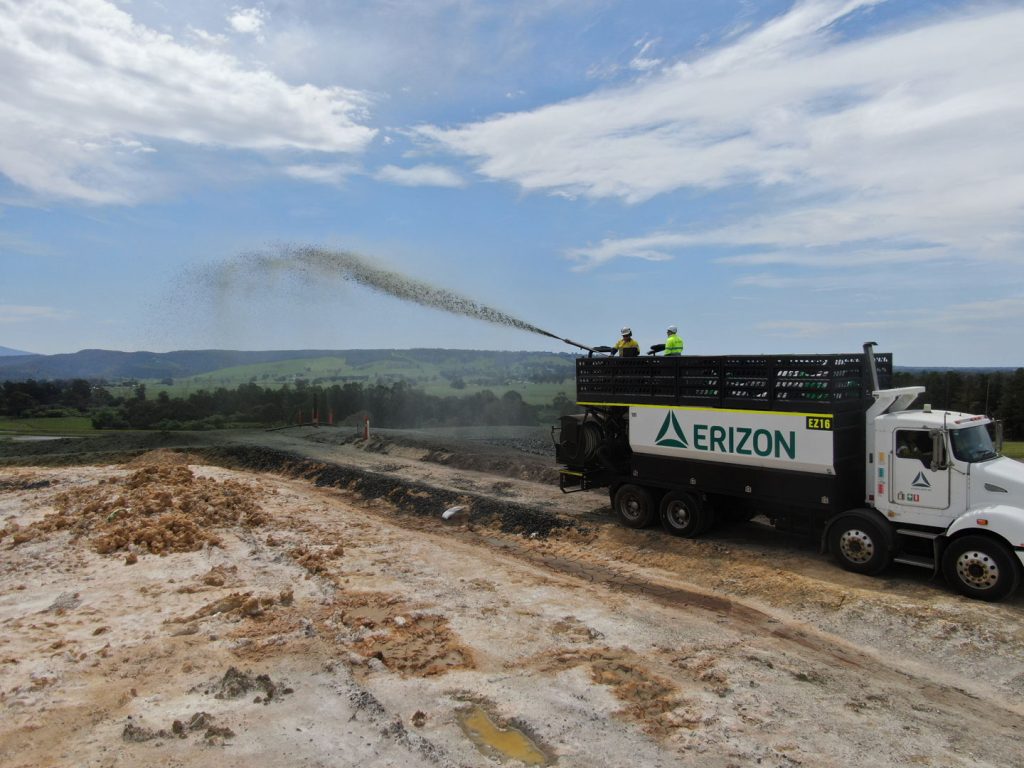
How Erizon Restores Degraded Land
At Erizon, we are fully committed to bringing degraded land back to life. Our highly experienced team implements advanced methods and state-of-the-art technologies to transform lifeless terrains into thriving ecosystems. It’s a challenging process; however, our passion to help industries transform their environmental footprints drives us to continue innovating and finding new solutions.
Some of our techniques include:
EnviroSoil
EnviroSoil is a specially formulated soil amendment that combines thermally refined organic fibres, high carbon, organic soil conditioners, seaweed extracts, mineral blends (including basalt) and microbial inoculants. The unique combination of these active components works synergistically, improving the growing conditions in the rhizosphere—the root zone of plants that significantly influences their growth and health.
EnviroSoil is a unique blend of nitrogen-fixing bacteria and mycorrhizae that stimulates soil to mimic the natural nutrient cycle. This transformation of degraded soils into fertile grounds supports robust plant growth by creating a sustainable medium for plant germination.
Furthermore, the thermally treated fibres in EnviroSoil play a significant role in soil rehabilitation. They provide an interlocking matrix that aids in minimising soil erosion. Simultaneously, these fibres serve as a primary food source for microbial colonies. This nutrient provision facilitates microbial regeneration during the initial stages of plant growth, also known as plant strike.
Start Your Rehabilitation Project with Erizon Today!
Successfully rehabilitating mine spoil is a multifaceted process, requiring a combination of various techniques, from physical amendments to the introduction of beneficial microbes. Erizon is dedicated to restoring degraded land and offers a range of services to help industries achieve their rehabilitation goals. Contact us today to start your rehabilitation project with our team of experts. Together, we can make a positive impact on the environment and promote sustainable land use practices.
Preserve natural soil health and healthy ecosystems with Erizon. Learn how we help the mining industry on this page.
